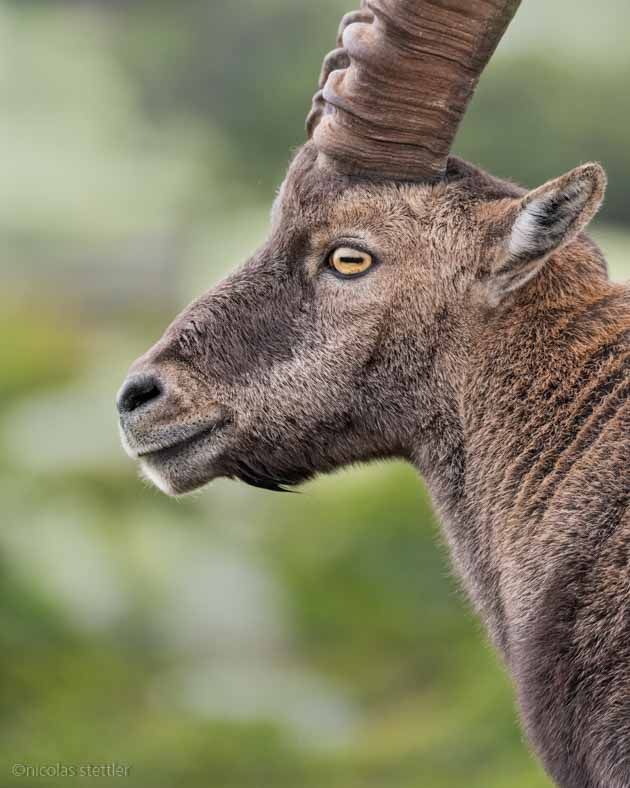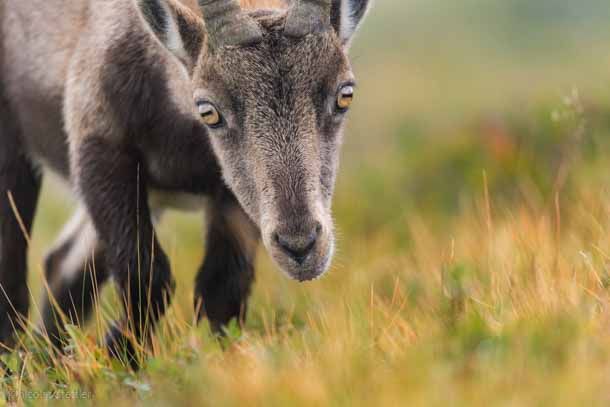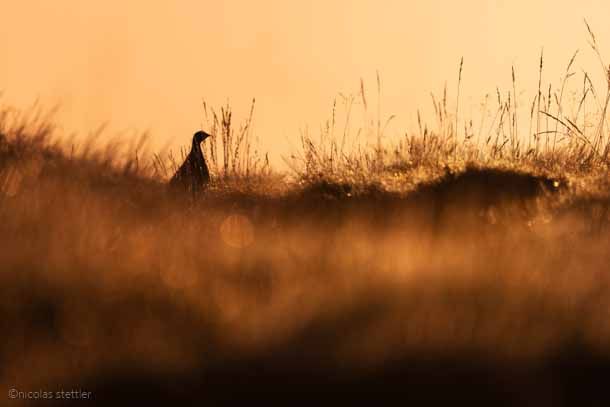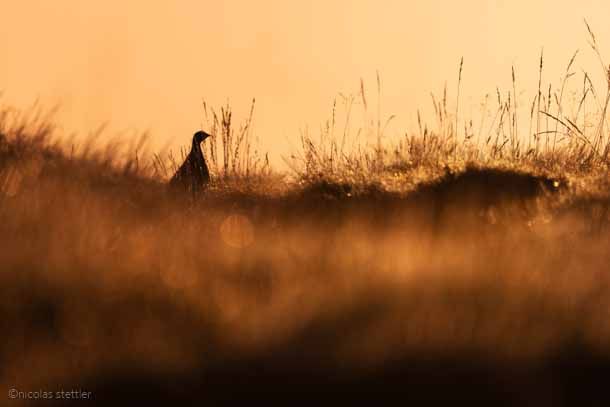Photographing Alpine Ibexes in the Swiss Alps
Last summer I spent a weekend in the Bernese Oberland looking for the alpine ibex. The Niederhorn is especially well known among nature photographers in Switzerland. There, the animals are used to the hikers and photographers and can be photographed without disturbing them. In this blog article I tell you how I was able to photograph the ibexes and what other animals I had observed.
The Alpine ibex (Capra ibex)
The ibex or more precisely the alpine ibex belongs to the order of even-toed ungulates. Species of the even-toed ungulates each have two or four toes. In the case of the ibex, it is two toes, which it can align independently. Together with the soft foot pads and the hard hoof edges, the hooves provide optimal grip in alpine terrain. There the ibex is protected from possible predators such as the lynx or the wolf. Only in winter the ibex comes down into the valleys to look for food. This consists of grasses and other plants all year round.
Because the horns and blood of the ibex were used as a remedy for a long time, the populations in the Alps have been decimated. Around the year 1650, the alpine ibex was extinct except for a few animals in the Aosta Valley in Italy. About 100 years ago 3 ibexes were 'kidnapped' from the Aosta Valley and released in the Swiss National Park. Since then the population has recovered quite well. In Switzerland there are again about 18'000 animals.
The Niederhorn
The Niederhorn is an approximately 2000m high peak in the Berner Oberland. The Niederhorn forms the beginning of the Justistal. The steep sides of the valley provide habitat for many alpine animals such as the Chamois, the Alpine ibex or the Rock ptarmigan.
Getting there by public transport is relatively easy. From Bern, the journey to the top station of the cable car takes a good two hours. However, the first gondola does not leave until 8.40 a.m., so an overnight stay on the mountain is highly recommended. Specially in the summer months, the light at 9 o'clock is already pretty harsh and in the evening, the last gondola departs long before the light gets nice and soft again.
Erster Tag
When I arrived with the gondola at the upper station on Saturday morning, it was in the middle of the clouds. With a visibility of only a few metres, I set off. Along the mountain ridge I could hear some mountain birds, but with the low visibility I couldn’t spot any of them. And until now, I haven’t seen a single Alpine Ibex.
After a couple of hours, the fog had cleared a little bit. A little further ahead I could see a group of Ibexes through the fog. About 30m away from the group I sat down on the ground and unpacked the camera. The group of Ibexes consisted of two females and two young. They were foraging along a ridge.
They didn’t seem to care about me and came closer and closer. Finally, the four of them walked past me and continued along the ridge. I also set off in the same direction and overtook the group with some distance. But I decided to walk a little further, hoping to find a male.
In fact, just a few minutes later I stood only two meters in front of two adult males. They were resting on the path and were hardly visible behind a small hill. Only a few meters before them, I could see them. But they remained very calm. From close range I could make some portraits of both of them. I played with different perspectives, compositions and picture details.
Out of all the portraits I shot of them, I like this one the most. It is not the usual boring portrait, but shows only a small part of the Ibex.
1/160 | f/ 8.0 | ISO 900 | 600mm
Surrounded by Alpine ibexes
Because I was so busy trying out different compositions, I didn't even notice that the group with the two females and the two young came from behind. So suddenly I was surrounded by Ibexes all around me. So, I was able to take some more pictures of the Ibexes before it was time to walk back to the mountain station. After a good dinner I actually wanted to go out again. Although the mountain was no longer in the clouds, the sun soon disappeared behind some distant thunderclouds and it quickly got dark.
Landscape photography in the morning
The next morning, I got up very early again. In the dawn I could also take some photos of the landscape. Especially the Justistal could be photographed very well. But I kept my 150-600mm on the camera. With 150mm I could emphasize the unique U-shaped end of the valley.
Of course, the alpine panorama in the other direction also offered some interesting photo opportunities. The sky was not so beautiful in this direction and so I decided to take a panorama. Despite 150mm this was not so difficult with the gimbal tripod head. In Photoshop the photos could be put together very easily. His resulted in an image with a unbelievable resolution of 241Mp!
1/2 | f/ 8.0 | ISO 64 | 150mm
Rock Ptarmigan in the morning light
ptarmigan. They were quite shy, but I was able to take some pictures of one of the Ptarmigans against the rising sun which created a nice silhouette. A little further away I could discover more Ptarmigans with some young ones. These were all the shier and it was impossible to get close to them.
So, I left the ptarmigans alone and continued along the ridge in search of the Ibexes. After a longer search I was able to find them again. However, the sun was already very high in the sky and the light was not so good anymore. soon after, I decided to start my way home. But instead of taking the gondola, I took the hiking path down the mountain.
On the hiking trail I saw a group of Capercaillies. Unfortunately, I had no chance to spot the well camouflaged hens in the dark forest and every time I thought that the last Capercaillie had flown away, another one flew up only a few meters from my feet.
Finally, in the late noon I arrived at the valley station. A cheese toast in a nearby restaurant was the crowning of a successful weekend with the Ibexes.
You might also find interesting:
Photographing water birds | How to get close to ducks
Bird Photography - Create impressive Images
Photographing birds can be very difficult. With the right equipment, the right settings and the right technique, the whole thing becomes a little easier. In this article you will learn how to create impressive and unique pictures of birds. I explain what you should pay attention to when taking pictures and where you can find birds that you can easily photograph.













